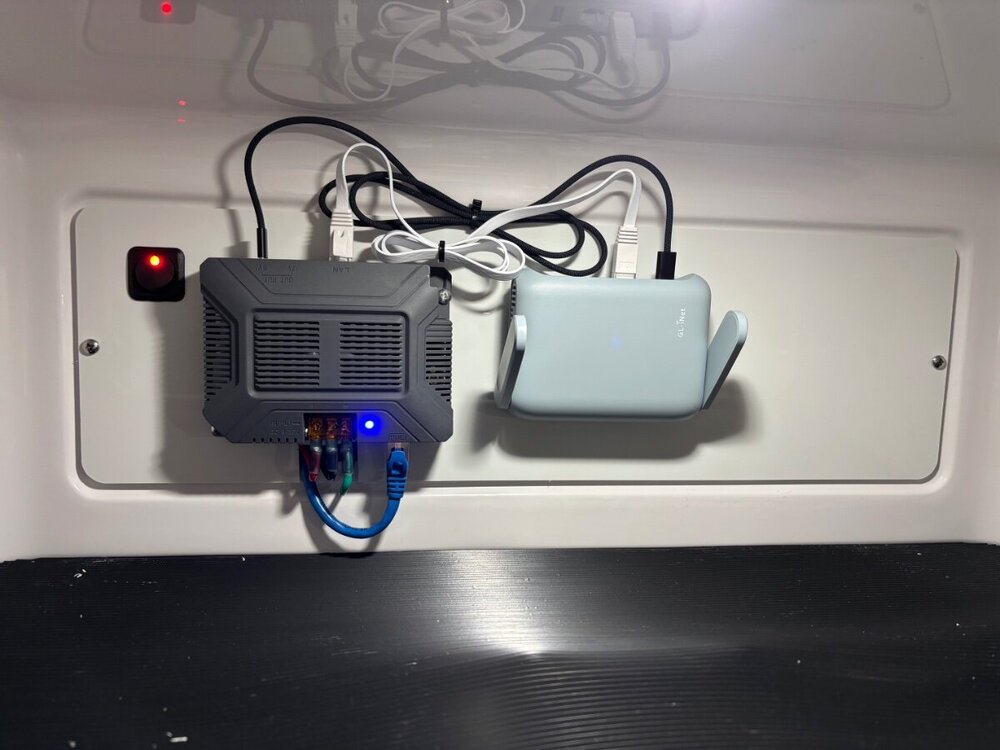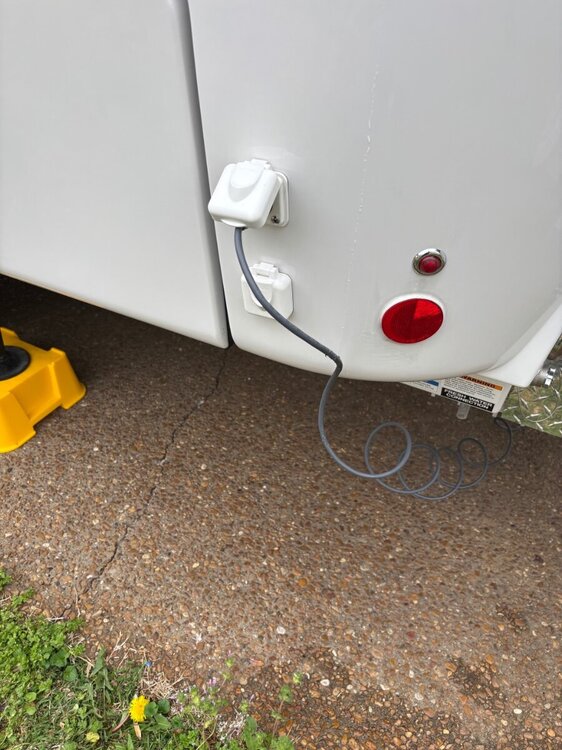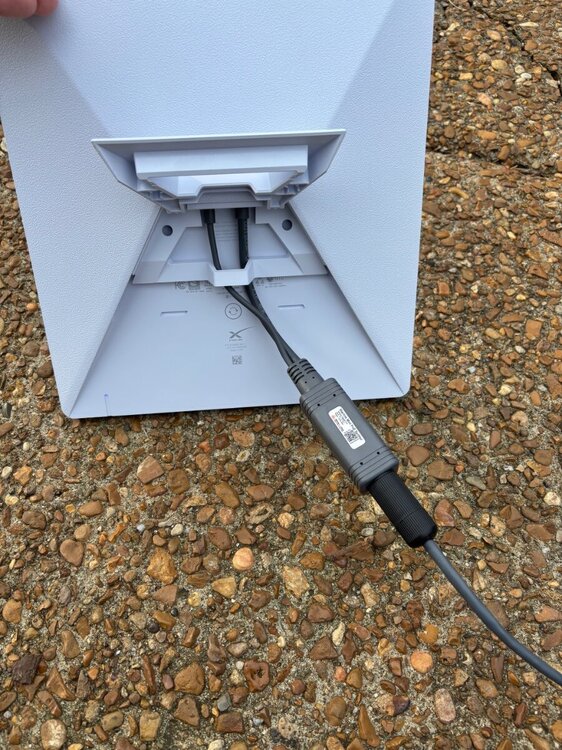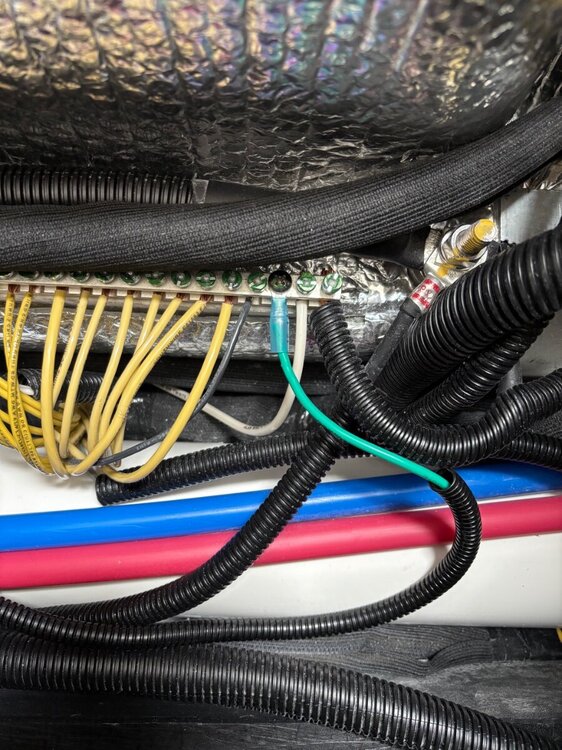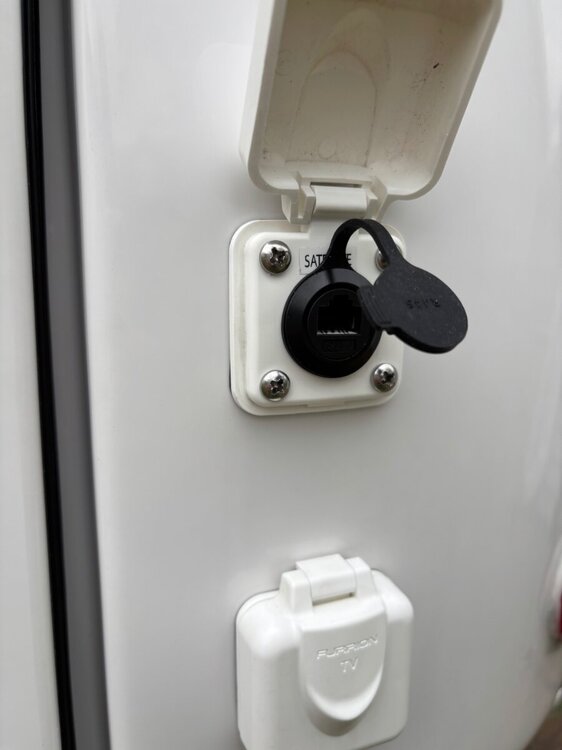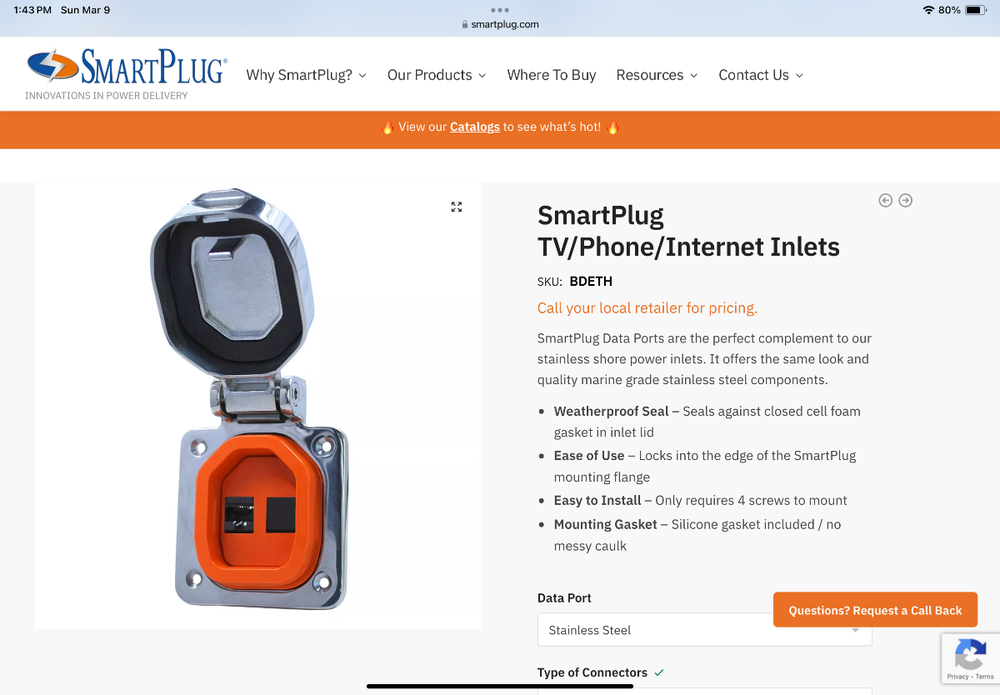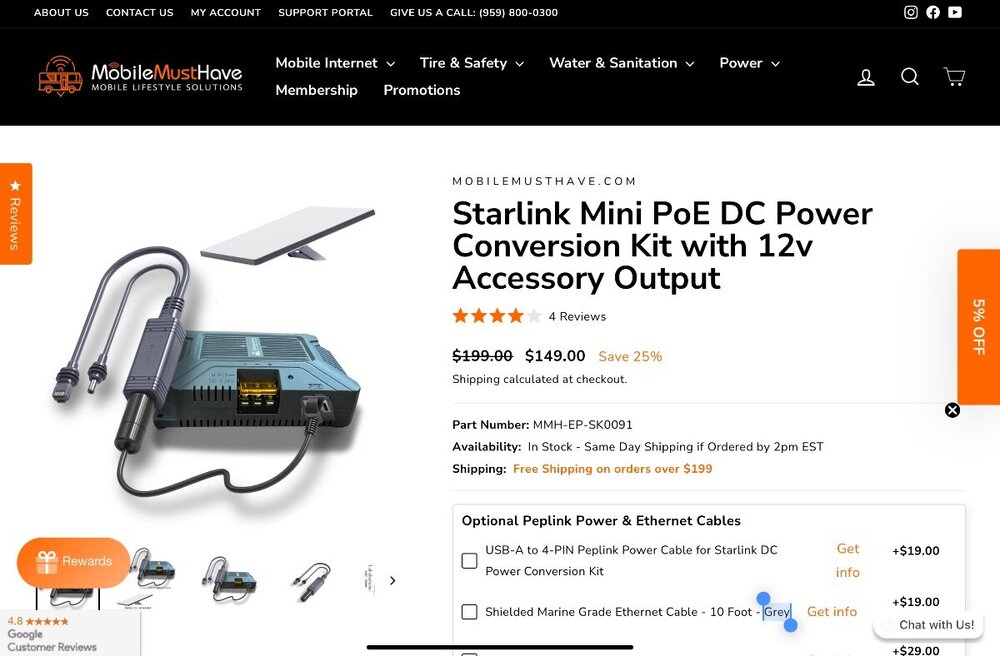
JT Long
Members-
Posts
11 -
Joined
-
Last visited
Everything posted by JT Long
-
Installed and tested. Works as intended. I tapped the wires going to the 12V receptacle and installed a cutoff switch which you can see in the photo. I’m not sure if the POE injector consumes power all the time or not, but installing that LED switch guarantees it and the router are off when I’m not using it. The injector has a chassis ground terminal, and I ran a wire back to the common bus. (The instructions said this would help reduce signal interference.) I did have to do ethernet cable surgery on the end going into the waterproof connector at the splitter going into the dish. After many bad words and prayers for forgiveness, I finally got the tiny wires in the right order and pushed through an RJ45 shielded connector. I probably could have got by using a cable intended for indoor use, but I purchased an outdoor rated cable made to the same Starlink standard. The protective boot over the connector was too big to fit inside the waterproof connector, so I had to cut off the end and put on a plain shielded connector.
-
Oh my goodness! That was exactly what I was doing! I can’t believe it didn’t dawn on me to put the nut on the back side of the Furrion cover! I spent the next hour in a panic, mumbling bad words occasionally, searching Amazon for a panel mount with longer screw threads! (I found one eventually.) Geez Louise.
-
@Snackchaser how did you get the nut onto the threads of the RJ45 connector? I ordered the shielded version of that same connector you linked above, but there are not enough threads showing inside the wall to get the nut to bite onto it.
-
Andersen WD Hitch Periodic Maintenance?
JT Long replied to Galileo's topic in Mechanical & Technical Tips
Wow, this topic got sideways big time! Back to the OP: I was already using an Andersen with my Airstream when we purchased the Oliver. When trading in the Airstream and picking up the Oliver, I had to change out the ball on the Andersen to a 2”. Before heading to the dealer I purchased a 2” ball, another sleeve and a snap ring. At the dealership we pulled the existing 2 5/16” ball out to change it to the 2”, along with the friction sleeve. After 12,000 miles of towing, there was very little wear on the sleeve that I could see. I was a bit surprised. Maybe it’s an annual check, but I don’t expect to change out the sleeve each year. As far as greasing the ball, doesn’t that defeat the design of the hitch? The ball is designed to rotate with the coupler, with the sleeve providing just enough friction to help mitigate sway. By greasing the ball you are defeating the friction between the ball and coupler that the design is depending upon. That friction though does cause me to periodically inspect the interior of the coupler for excessive wear. It would be easy enough to replace the bulldog coupler if excessive wear was present. -
@Snackchaser thanks again. Don’t take this the wrong way, but the inside of your Furrion caps look dirty. Not that’s anything wrong with that, but I do wonder if an RJ port that has a rubber cap might be a good idea? Do you have any concerns about the RJ port getting dirt or moisture in it? Also, I haven’t thought about, much less looked, inside to see how to route the ethernet cable from the attic. How did you accomplish?
-
I appreciate this conversation. Thinking through what is needed is not easy for me and I can get analysis paralysis. My non-POE solution includes the SmartPlug data port, which is expensive at $100 plus the two keystone ports to fit it: one for ethernet and one for a barrel jack connector for the Starlink power cable. Together that’s $137.29 for the port to exit the camper. Keystone components make it easy to snap in though. I do wonder if I could repurpose the two Furrion TV and Satellite ports instead, one for power and the other for ethernet. I’m sure it would take some cutting and modifying though. If I go the SmartPlug port route, then also adding the Victron Orion-Tr 12/24-5 to step up the voltage, and I would also need a stepdown regulator for the 5V/3A I would need for my GL-iNet Beryl router. I’ve found a cheap one with a USB C port for $9, and I could repurpose the 12V cigarette outlet in the attic for that. Total for that solution is $210, but if I could repurpose the existing Furrion ports I could save $137 and forgo the SmartPlug port. The POE solution is the MobileMustHave.com POE kit for the Mini at $149. This would be a much cleaner solution to me, using the wiring to the 12V port in the attic to power the POE injector. An added benefit to this one is that the injector has a USB-C 5V/3A output built-in, so I could use it to power my Beryl router as well. (It also has a 12V output for a Pepwave.) I don’t have to worry about wiring a separate boosted power supply for the dish and don’t need another power source for the router, and would only need an ethernet pass through coupler to get out of the camper. So the $149 POE kit and a $12 pass through coupler for $161. Decisions, decisions . . .
-
Hey @GaRambler I tested the distance of the built in wifi, which isn’t too bad, but you really need to get the dish up in the air for best reception the further away you get. That’s why I decided to get a small portable router like the Beryl AX and bridge the Mini to the Beryl router inside the camper. I could still sit the dish on the ground and get a strong signal inside the camper. Still thinking about the best approach, but yes, if using the camper batteries you’ll need to boost the voltage one way or another. The POE device is appealing since you only need to run an ethernet cable out to the dish since it carries the power, but its a more expensive solution.
-
UPDATE: I have confirmed with MobileMustHave that the USB C port on their converter is powered at 5V, 3 amps, which is a PERFECT fit power supply for the GL-iNet Beryl AX router. I can just tap the wires going to the 12V port in the attic to power their POE converter, then plug the Beryl AX into the USB C port on the converter. That will get me a 100% DC solution off the camper batteries and I only have to send out a single ethernet cable to the Starlink Mini dish, through the existing satellite coax port on the Ollie. I can then save my Starlink power cable for other applications when using it away from the camper.
-
My alternative to this solution is to stick with separate ethernet and power cables and install a SmartPlug data port outlet, replacing the existing satellite coax port. I could then use the OEM Starlink 12V/USB cable kit to bring power from the 12V power port in the attic to the SmartPlug port and the other ethernet jack to connect to my Beryl AX router. I would just need to get a keystone coupler barrel connector (the SmartPlug accepts keystone ports) to pass the power out to the Starlink power cable. I could then loom the power and ethernet cables together. I think this will work and might be a cheaper solution. I would need to install a USB C port in the attic for the Beryl AX router.
-
This is the POE injector kit I am considering. It boosts 12V coach batteries to 48V up to 100W over ethernet, and on the Starlink end splits out the power back to the DC port on the dish. The converter has a LAN port to connect to an external router. This solution would allow you to only send a Cat6 ethernet cable out to the dish, negating the need for a separate power cable. My router is the Beryl AX3000 WiFi 6 portable router, which can be powered though a USB C PD port for a completely DC solution.
-
Thinking how I’m going to get the ethernet cable from my Starlink Mini into the LE2 and plugged into my router and powering the dish from my camper batteries. (Rather do DC power and not have to use the inverter.) Has anyone installed the SmartPlug dual data port, replacing the factory satellite port? That would give me ports for both the ethernet and power cables to exit the hull. I’m thinking I could use the 12V port in the attic with the Starlink 12V cable kit, but that won’t leave me with much power cable length outside the camper to move the dish around. My goal is to use the camper batteries for power and a third party router inside instead of relying on the built-in wifi in the dish. **I know the Mini does not support POE, However, Mobilemusthave.com has a kit that carries the power over the ethernet cable and then splits it back out at the dish. Sort of a POE solution that allows you to have only one cable going out of the hull instead of two.

